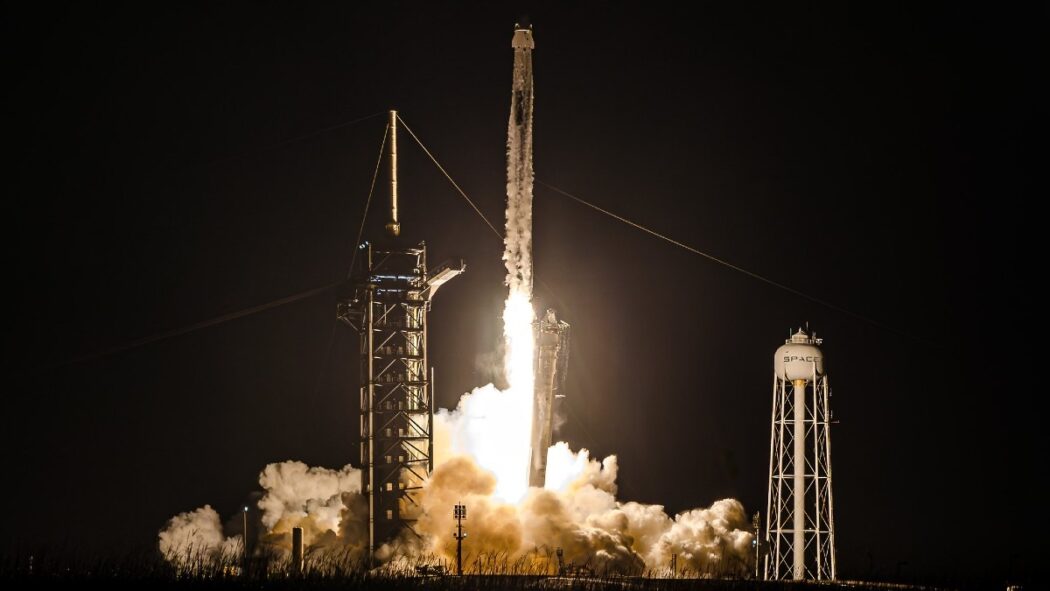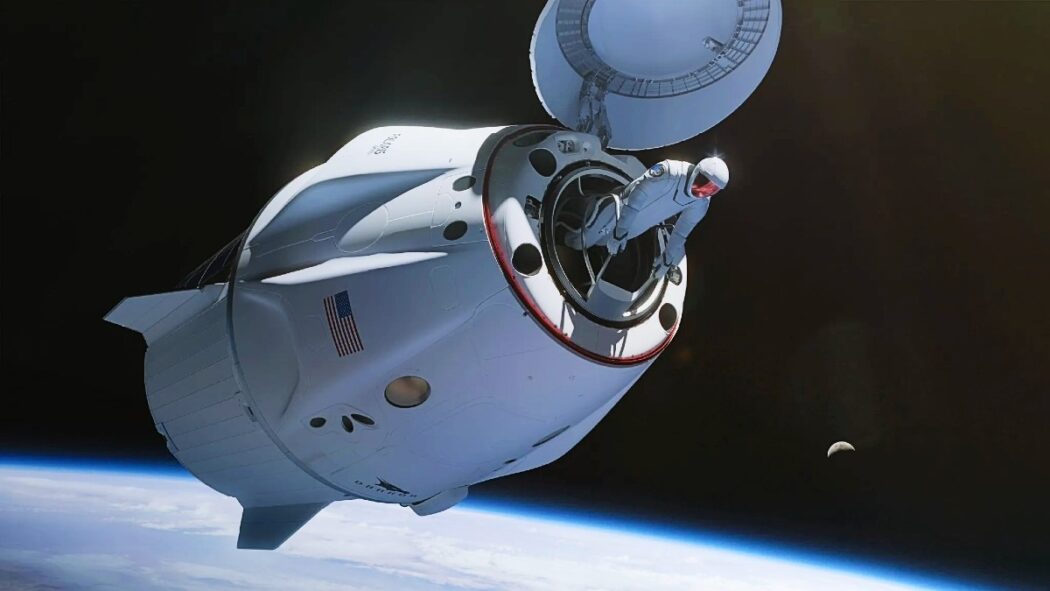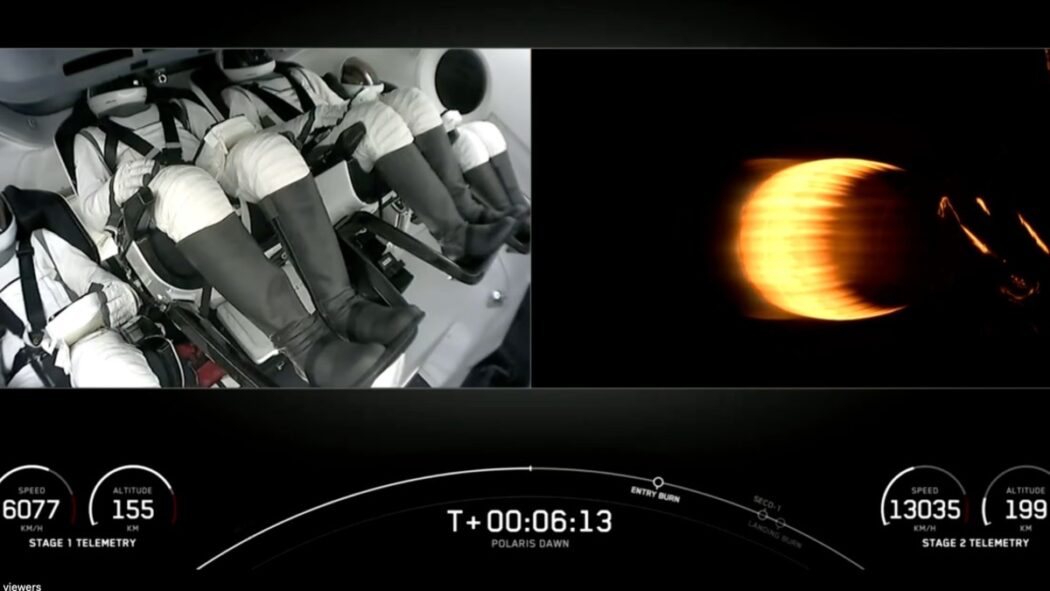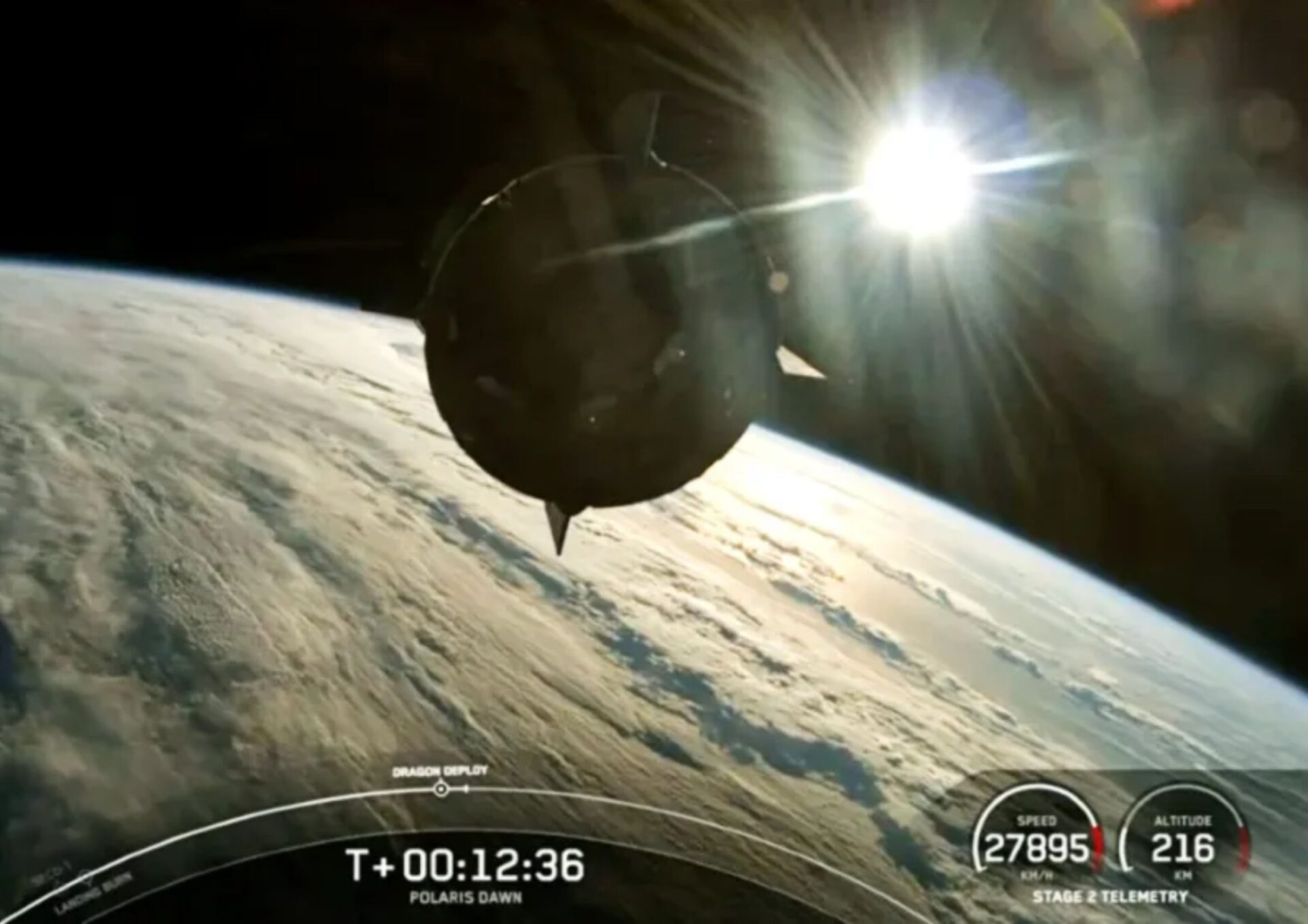The Polaris Dawn mission successfully launched from Kennedy Space Center early this morning, marking the end of several delays that had pushed its initial August 26 launch date back. These delays were caused by issues including a helium leak on the launchpad and persistent poor weather conditions.
Today’s launch proceeded without a hitch, starting with the fueling of the rocket on launchpad 39A, a site famous for hosting many historic Apollo missions. The Falcon 9 rocket lifted off at 5:23 a.m., followed by the separation of the first and second stages two minutes and 40 seconds into flight. Twelve minutes after liftoff, the Crew Dragon capsule detached from the Falcon 9’s upper stage. As the capsule ascended towards the sunrise, SpaceX’s headquarters in Hawthorne, California, erupted in cheers, which were shared live on X (formerly Twitter).

The Polaris Dawn mission, funded by billionaire Jared Isaacman, who will command the Crew Dragon capsule named Resilience, represents a significant departure from Isaacman’s previous spaceflight. His earlier Inspiration4 mission, which occurred three years ago, was a pioneering two-day flight in Low Earth Orbit (LEO) featuring an all-civilian crew and no professional astronauts. On that mission, the capsule was remotely piloted by SpaceX mission control.
Joining Isaacman on the Polaris Dawn mission are Scott “Kidd” Poteet, serving as mission pilot, along with mission specialist Sarah Gillis and medical officer Anna Menon. Both Gillis and Menon are SpaceX employees, with Gillis scheduled to participate in the spacewalk alongside Isaacman, while Menon will contribute as a space operations engineer.
The mission’s primary objectives include gathering scientific data on the effects of space travel on the human body and testing new technologies. Among the innovations being tested are laser pulse communications as an alternative to radio waves and the use of encountered radiation to create X-rays without a traditional X-ray machine. Isaacman has highlighted these goals as ambitious, noting the significant potential impact of the mission.


A major highlight of the mission is the planned spacewalk on the third day, conducted at an altitude of 435 miles above Earth. For this endeavor, the entire crew will don new spacesuits specifically designed for spacewalks. The capsule will be depressurized, and the crew will exit without using an airlock. Isaacman and Gillis will be tethered to the spacecraft by umbilical cords during the spacewalk, while Poteet and Menon will stay inside, monitoring displays and managing the umbilicals.

The new spacesuits, developed from previous Crew Dragon pressure suits, feature design improvements for greater flexibility and comfort. They remain soft until pressurized, enhancing mobility, and include advanced thermal management systems. The helmets are equipped with an exterior coating to reduce sun glare and incorporate a camera and heads-up display for real-time suit status updates.
Elon Musk, who unveiled the spacesuits in May, described this development as a significant milestone. He emphasized the importance of creating high-mobility spacesuits that are both affordable and comfortable, noting that such advancements are crucial for the future of space travel and should be produced in large quantities.



